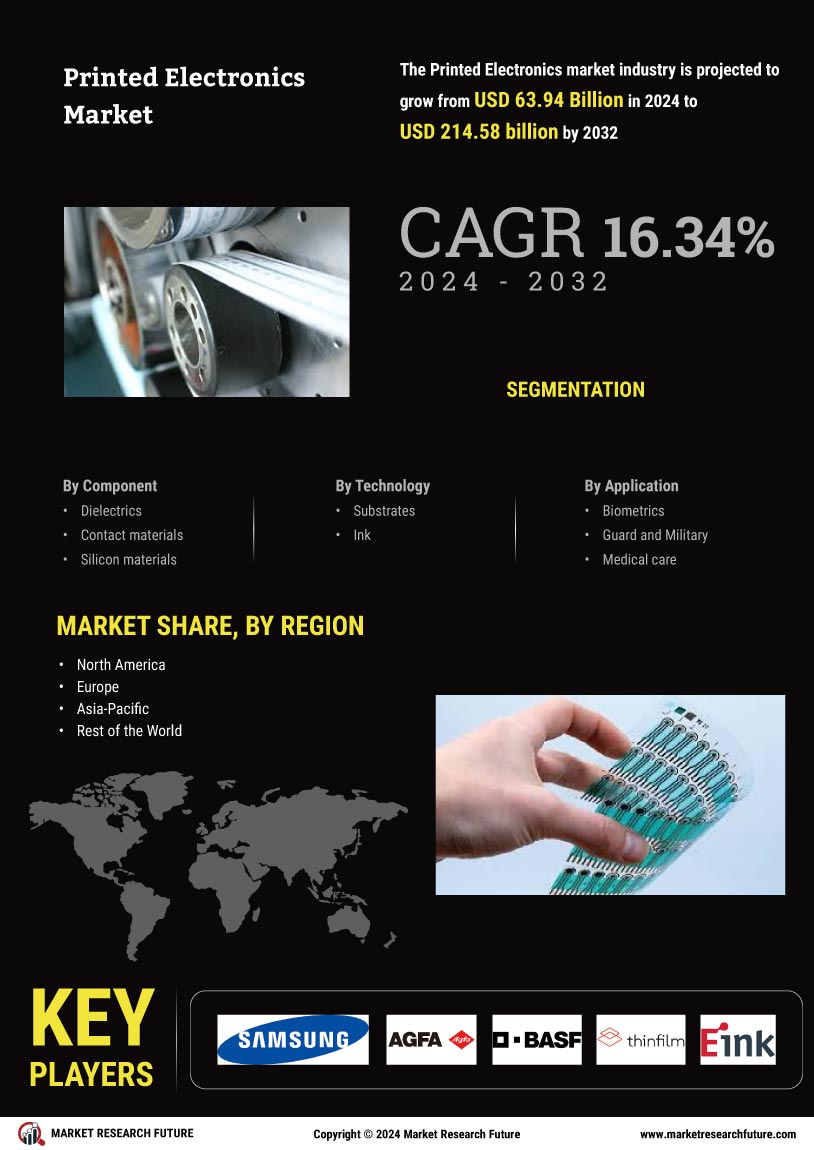Growing IoT technology to Drive the market growth
Market CAGR will rise due to the breadth of printed electronics applications expanding across the industry due to the growing IoT market share. Additionally, the increased demand for printed RFID devices and sophisticated OLED displays fosters the technology's adoption due to its low production costs, high efficiency, and low power consumption.
The topic of printed electronics has attracted a lot of research attention, intending to constantly improve on what is already possible and find new uses for it in various industries. Over the past few decades, increased R&D expenditures by numerous groups, organizations, and businesses have produced several benchmarking advances and improvements. Consumer electronics makers, such as IoT devices, smartphones, display devices, and other communication devices, are a large portion of the end-product manufacturers. Depending on the need, manufacturers incorporate technology into various items and provide it to distributors or merchants for commercial purposes.
The major competitors in the market are concentrating on distribution alliances or mergers and acquisitions to get a foothold in the developing regional markets, such as Asia Pacific. For instance, CymMetrik, a Chinese business, and Thin Film Electronics ASA (U.S.) have inked a distribution deal. The collaboration intends to increase sales, especially in China, Taiwan, India, and other Asia Pacific countries. Due to the growing manufacture of consumer electronics on this continent, printed electronics technology is in great demand.
The reasons driving the growth of the printed electronics market in the healthcare sector are the cheap cost of production, advancements in digital print technology, an increase in financing activities, and the healthcare sector's preference for innovative technologies.
Flexography, inkjet, gravure, and screen printing are commonly used printing processes for printed electronics, which offer photonic and printed electronics on various substrates. These methods print on materials, including paper, fabric, and polymers. This printing technique is frequently employed on wearable technology, sensors, and flexible screens.
A significant element anticipated to propel the printed electronics industry throughout the forecast period is the increase in demand for the design of mobile devices and large-screen displays in both developed and emerging nations. Rising investment in developing advanced printing materials has also stimulated the market. Some of the key players develop products that help the market grow. For instance, in February 2020, SEMI-FlexTech announced the launch of six new projects to accelerate the development of sensors and sensor systems for new uses in the healthcare, automotive, industrial, and defense sectors. Thus, driving the Printed Electronics market revenue.
The integration of printed electronics into various sectors appears to be reshaping traditional manufacturing processes, fostering innovation and sustainability in product design.
U.S. Department of Energy




















Leave a Comment